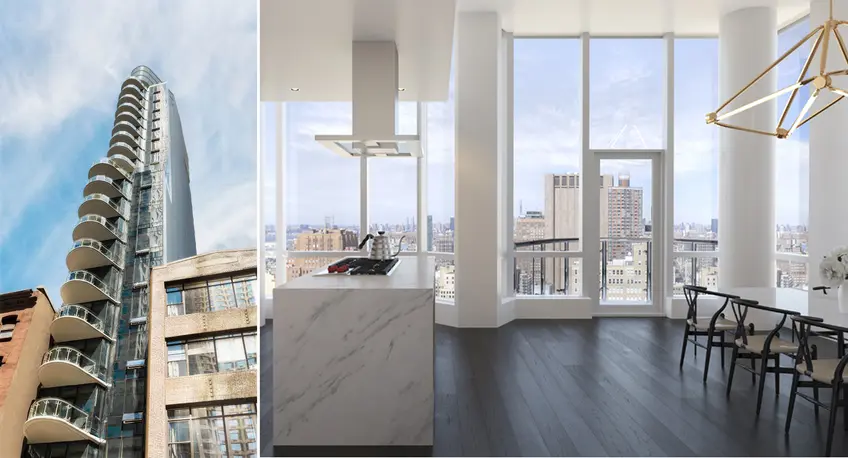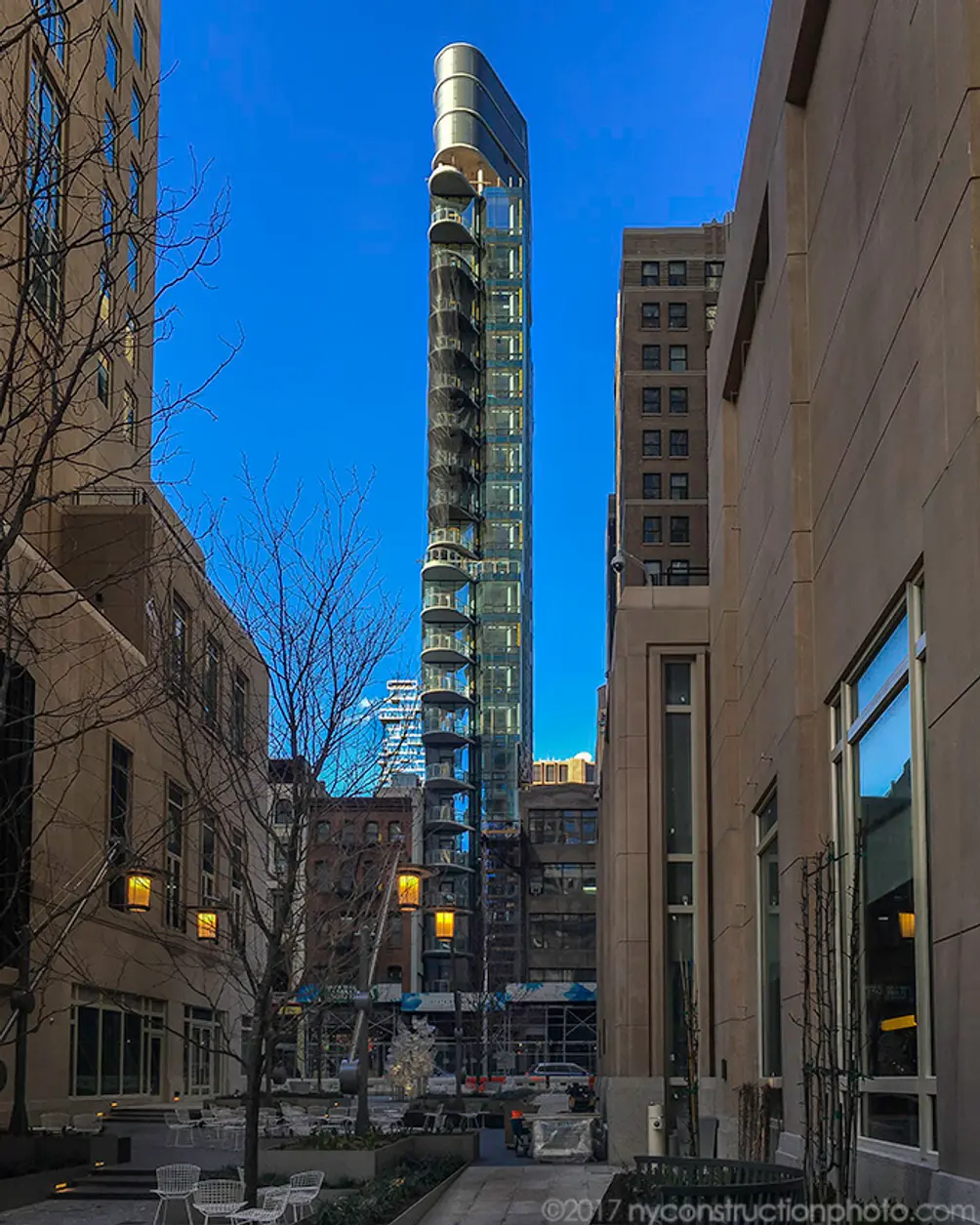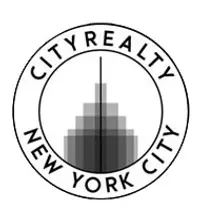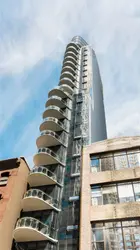 19 Park Place
19 Park Place
After a decade in the works, the construction of 19 Park Place is nearing its end. A recent press release announced that building’s slick blue façade is finally complete. The 21-story building rises from a through-block site in southern Tribeca across from Silverstein’s newly-opened 30 Park Place. At nearly 300 feet tall and an astonishing 25-feet wide, the building is among the most slender in the city. Its design is shaped by the firm of Mexican-born architect Ismael Leyva and is composed of a two-tiered glass shaft adorned by circular balconies with glass railings.
Slated to be fully-finished by year’s end, the condominium building will comprise 24 residences, including 11 full-floor units and two duplexes. Currently, all marketed units have been signed into contract at average prices just north of $2,000 per square foot. Residents will be greeted by a double-height lobby and benefit from an amenity package that includes a fitness center and a residential lounge with a public. “We’re excited to see the construction progress at 19 Park Place and have the building take its shape and form on this challenging site,” said Leyva.
In this article:
 Photo courtesy of newyorkconstructionphoto.com
Photo courtesy of newyorkconstructionphoto.com
As a short walk along the southern perimeter of Central Park would show you, pencil-thin skyscrapers are coming back in vogue in New York. While they still tend to draw gasps from locals and are pretty much impossible to build in all but a few neighborhoods, the building type lives on due to our surging real estate prices, demand for views, and our lack of developable land.
According to the Skyscraper Museum's past exhibition Slenderness: New York | Hong Kong, “New York was the birthplace of the improbably slender tower in the late nineteenth and early twentieth century when numerous buildings, such as the 1917 Bush Tower on W. 42nd Street or the 1897 Gillender Building at Wall and Nassau streets, rose as tall shafts over every inch of their very narrow and high-priced lots.” We’d probably see a lot more of these types of buildings going up if not for our rather conservative FAR-based zoning resolution passed in 1961. Now, the best chance to yield a slender tower is to build in areas with no or generous height limits, such as in parts of Midtown and the Financial District, and to acquire surrounding air rights from adjacent properties.
According to the Skyscraper Museum's past exhibition Slenderness: New York | Hong Kong, “New York was the birthplace of the improbably slender tower in the late nineteenth and early twentieth century when numerous buildings, such as the 1917 Bush Tower on W. 42nd Street or the 1897 Gillender Building at Wall and Nassau streets, rose as tall shafts over every inch of their very narrow and high-priced lots.” We’d probably see a lot more of these types of buildings going up if not for our rather conservative FAR-based zoning resolution passed in 1961. Now, the best chance to yield a slender tower is to build in areas with no or generous height limits, such as in parts of Midtown and the Financial District, and to acquire surrounding air rights from adjacent properties.
Would you like to tour any of these properties?

New Developments Editor
Ondel Hylton
Ondel is a lifelong New Yorker and comprehensive assessor of the city's dynamic urban landscape.


 6sqft delivers the latest on real estate, architecture, and design, straight from New York City.
6sqft delivers the latest on real estate, architecture, and design, straight from New York City.
